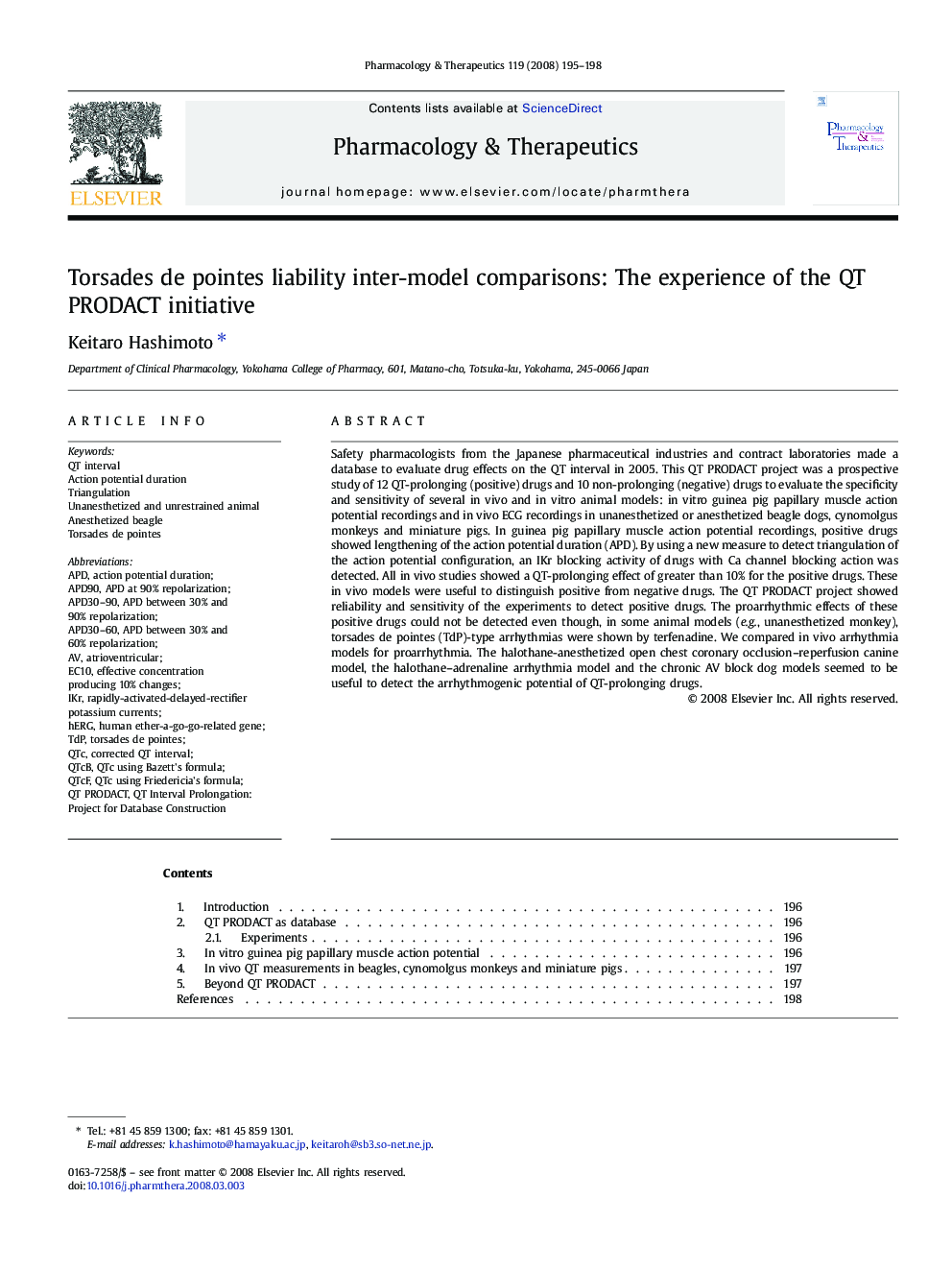| Article ID | Journal | Published Year | Pages | File Type |
|---|---|---|---|---|
| 2563868 | Pharmacology & Therapeutics | 2008 | 4 Pages |
Abstract
Safety pharmacologists from the Japanese pharmaceutical industries and contract laboratories made a database to evaluate drug effects on the QT interval in 2005. This QT PRODACT project was a prospective study of 12 QT-prolonging (positive) drugs and 10 non-prolonging (negative) drugs to evaluate the specificity and sensitivity of several in vivo and in vitro animal models: in vitro guinea pig papillary muscle action potential recordings and in vivo ECG recordings in unanesthetized or anesthetized beagle dogs, cynomolgus monkeys and miniature pigs. In guinea pig papillary muscle action potential recordings, positive drugs showed lengthening of the action potential duration (APD). By using a new measure to detect triangulation of the action potential configuration, an IKr blocking activity of drugs with Ca channel blocking action was detected. All in vivo studies showed a QT-prolonging effect of greater than 10% for the positive drugs. These in vivo models were useful to distinguish positive from negative drugs. The QT PRODACT project showed reliability and sensitivity of the experiments to detect positive drugs. The proarrhythmic effects of these positive drugs could not be detected even though, in some animal models (e.g., unanesthetized monkey), torsades de pointes (TdP)-type arrhythmias were shown by terfenadine. We compared in vivo arrhythmia models for proarrhythmia. The halothane-anesthetized open chest coronary occlusion-reperfusion canine model, the halothane-adrenaline arrhythmia model and the chronic AV block dog models seemed to be useful to detect the arrhythmogenic potential of QT-prolonging drugs.
Keywords
Related Topics
Health Sciences
Pharmacology, Toxicology and Pharmaceutical Science
Pharmacology
Authors
Keitaro Hashimoto,
